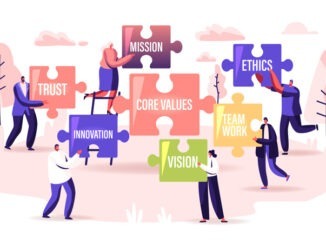
Being a successful manager today is a tough job that requires constant multi-tasking – here’s how to ensure you make time for your own development
CREDIT: This is an edited version of an article that originally appeared on Harvard Business Review
Here are a few tried-and-tested solutions to help managers balance the demands of the day-to-day with investing in their own development.
The Say-Do Development Gap
When teams don’t see their manager investing in their own development, it creates a “say-do” development gap, which has a negative ripple effect for both managers and their teams: Team members lose confidence that committing time to their career development is the right thing to do and may even question whether their manager really values continual learning. At the same time, managers miss out on important moments to develop skills and capabilities to improve their performance and support their ambitions for the future.
What to do differently: Share learning goals
One simple and effective way for managers to avoid the say-do development gap is to share their learning goals openly with their teams. Sharing development priorities has multiple benefits.
First, it prompts managers to identify what development they want to focus on, and sharing their goals increases accountability. Second, involving team members means that managers are surrounding themselves with more people to support their development and removes the idea that learning from others is linked to levels and hierarchy. Finally, when team members see their managers setting and sticking to development goals, it prompts them to do the same.
For example, a manager who shares a learning goal to increase their internal profile might benefit from a team member spotting an opportunity for them to speak at an event. A manager looking to develop their ability to use data to drive decisions could be supported with feedback from their team members on what they currently do well and what could be better.
When approached in this way, development doesn’t need to be another thing that gets added to a manager’s to-do list; it becomes part of their daily work and is accelerated by the people who work for them.
The Bubble Barrier
With so many demands on their workdays, it’s understandable that managers rarely spend time on development outside of their organisation. The challenge of finding the time and opportunity to learn in different places and with new people often feels insurmountable and falls into the category of ‘should do’ rather than ‘will do.’
Relying on internal-only development results in managers developing a narrow view of the world and limits their learning. And operating in the bubble of internal knowledge and networks means that managers are reenforcing who and what they already know rather than cultivating their curiosity. Managers need to learn beyond the internal bubble so that it doesn’t become a barrier to their growth.
What to do differently: Knowledge-swap sessions
An efficient way to bring the outside in is to approach peers in a non-competing organisation to co-host a team development session, where both teams share their expertise with each other.
For example, a team with agile expertise could knowledge-swap with a team that has strong communication capabilities. Or an established team in a large organisation might spend time with a team from a smaller startup, exchanging insights on innovation in different operating contexts.
Example agenda items for knowledge-swap sessions
‘What if?’ wall: Each team shares an idea or objective they’re working on, and the other organisation creates a …
These knowledge-swap sessions allow everyone to spend time in a different working world, create new connections, and learn together (which also supports overcoming the say-do gap). The format of a swap session can range from a virtual hour over lunch to a full day in a room. Holding knowledge-swaps gives managers — and their teams — regular opportunities to learn from people outside the organisation in a way that’s part of their existing rhythm of work, rather than something extra to squeeze in.
The Time Trap
We often hear managers say: ‘I don’t have time to invest in my development. I’ll get around to it when everything calms down, or when this project has finished, or when I’ve recruited this person, etc.’ This way of thinking means keeps many managers stuck in a time trap, which will hold their career back over the long-term.
These time traps aren’t a result of managers making excuses — they reflect the reality of the challenges they’re dealing with. The mistake is the hope that one day we’ll magically have more time and fewer things to do. If managers look for the perfect moment to focus on their development, they’re likely to be left waiting and stagnating in their career.
What to do differently: Manager micro-learning moments
Many people still associate development with formal learning methods like taking a course. But what managers need are small, easy ways to make development part of their day-to-day.
Practicing micro-learning moments is a memorable and simple way for managers to kickstart the habit of continual improvement. Effective micro-learning moments usually take less than 10 minutes, and they’re small but significant in their impact, as managers benefit from a compound effect of continual learning over time. Here are a few examples:
Fast feedback: Ask your team members to answer the same fast feedback question: What three words would you use to describe me at my best? This simple question gives managers instant insight into whether their intent is matching their impact.
One-minute weekly review: End your week by spending one minute jotting down the answers to these two self-awareness questions: What has given me the most energy this week? What could have been better this week?
Strength accelerator: Pick one skill you want to strengthen and identify an action related to either regularity (how could you use that strength more?), range (where else could you use that strength that you don’t today?), or reach (who could you share that strength with?).


Be the first to comment